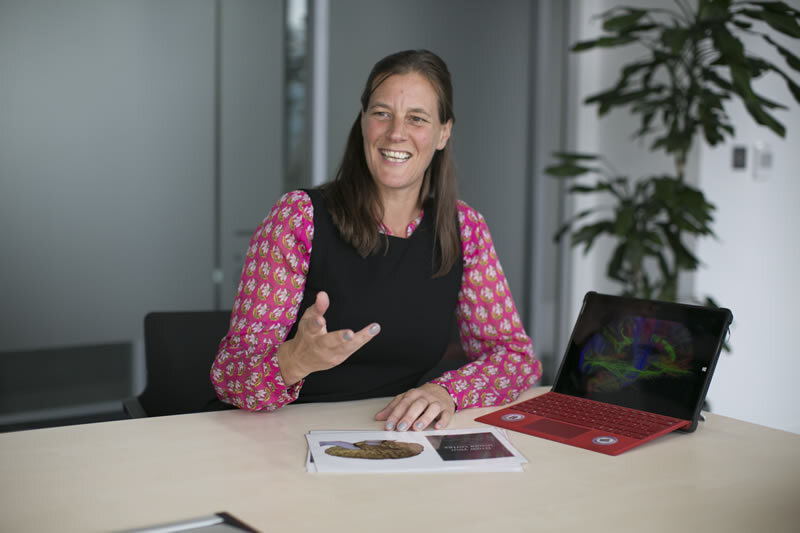Dr. Tamara Russell is a Clinical Psychologist, neuroscientist, martial artist, and Founder of the Mindfulness Centre of Excellence in the United Kingdom. She is a renowned mindfulness consultant and trainer worldwide, conducting research exploring the link between movement, mind and the brain, and is the author of two books ‘What is Mindfulness’ and ‘Mindfulness in Motion’.
(Our conversation has been condensed and edited for clarity.)
When people think of mindfulness, they may have an image of someone sitting perfectly still with a completely empty mind. Can you comment on this and tell us how you personally define mindfulness?
We’re bombarded with these images of the more classical meditation postures, crossed legs, eyes closed, empty mind. There are some people that are able to attain that, but for your average, busy, working professional, this may not be possible and actually may not be helpful. Much of my work is trying to myth bust and say it is one way to approach mindfulness and meditation within a very classical, contemplative practice tradition. But I’m a bit more pragmatic and I work with busy, stressed out entrepreneurs and business leaders, who when they’re invited to do this sort of practice they slightly roll their eyes back. So I’ve tried to simplify things.
Currently there are ninety-four definitions of mindfulness in the various literature, but here is a really simple definition that I like to work with: Mindfulness is care, plus attention, to prevent future harm. As such, these practices are best used as preventative medicine, even though we do find them in our modern healthcare setting as treatments. Some of you may have come across Mindfulness Based Stress Reduction (MBSR) for pain management and Mindfulness Based Cognitive Therapy (MBCT) for the treatment of recurrent depression. But ultimately, it’s best positioned as a preventative technique.
What happens to our brain when we’re being mindful?
I’m really inspired by the work of Dr. Wendy Hasenkamp. She’s the scientific lead at the US based Mind and Life Institute. She has some great work with this dialogue between contemplative practice, mostly Buddhist practice, and modern science. She did a great study on classical mindfulness. She scanned people practising mindfulness by focusing on their breath and used functional MRI – a machine that records (roughly) where the blood is flowing around the brain during tasks. She asked the participants to click a button when they noticed that their mind had wandered off the breath and used this to model the neuro-imaging data.
What she discovered was that there are four cognitive stages that activate three brain networks. So the first movement of mind is the decision to focus the attention on a single object. We have to say brain, I want you to just focus on the breath, activating the attention network. Two seconds later the mind wanders. This happens in about 95% of people. The minute we try to focus, the first thing we notice is we’re not focusing. So we start to focus, the mind wanders. But the reality is, at this moment, your attention network has switched off and your default mode network has activated.
Some call the default mode network the mind wandering network. It’s the place of memories, of thinking and creativity. It’s not a bad place, it’s a fantastic place, but if you ask your brain to focus on one thing, it’s not where you told your attention to be. So we focus, the mind wanders, and then there’s this moment, oh, hang on a minute, that is not breath. That is me thinking about all the things I need to do. So there’s this moment of noticing. This activates the salience network.
The salience network is designed to alert us when things are not as we expected them to be. So if we set a strong intention to be on the breath then the mind wanders, in the background, our executive functioning network, working memory of just going, is it breath? And as long as it’s breath, that system is ticking along in the background. But then I start thinking about emails, and the system goes, hey Tamara, you’re thinking about emails, you’re not on your breath anymore – what do you want to do? And here is where I have a choice. If I’m firm in my motivation and intention to train my brain and focus on my breath when I’ve got a thousand emails to answer, then I need to say to my brain, my default mode network, I love you, thank you so much for all that wonderful thinking that you brought to me today, but not now.
So here, I’m activating the brain’s braking system and saying, I’m not going to give you any more energy, because what I want to do is re-gather my attention and bring it back to the object.
Focusing, getting lost, noticing and bringing the attention back to the object are the four cognitive stages that sequentially activate the attention network, the default mode network, and the salience network. This is called the neurocognitive model of mindfulness. And that for me is the mini gym that we’re training in a mindful moment. And it’s actually really helpful to go around it many times because then you’re working out the muscles, and you’re learning to switch networks with awareness.
The salience network especially is really interesting to me as a clinical psychologist, because it’s the network that helps to alert us when things are not as we want them to be. In a mindfulness practice, we might wish we were on the breath and we’re not, but it’s the very same network that’s activated when things go wrong in our life too. That’s why you hear these incredible stories of mindfulness practitioners, who for example get a diagnosis of cancer or have a serious illness, and it always surprises and reassures me when they say things like, it’s not how I want it to be but I know that if I get reactive and struggle and fight, this will make things worse. It’s not about
being passive, but actually having the skills to minimise reactivity, in order to deliberately choose and respond with where you direct your attention.
What can practising mindfulness help us with when it comes to our wellbeing and performance at work?
Part one is about learning to focus attention on what you want it to do. The work applications of this are fairly obvious and this is something I talk about a lot with my clients. If you’ve got a million tasks to do in the day there’s probably variable levels of attention and focus that you need for each one, and our job is to figure out where the attention is best directed – How do I work best for my most focused attention? Which tasks need it and how do I map that into my working day?
The second benefit is getting to know the landscape of your mind which I would call managing the mind space. This is especially important now, because when I talk to my clients, what’s occupying a huge portion of their mind space is worries, uncertainties, anxieties, fear, COVID, etcetera. We want this space clear and clean, whether we want to do creative thinking and let our mind do its magic, or whether we’re doing very linear strategic thinking and problem solving. Either way, we don’t want all this extra stuff in there because it takes up energy and space. So going around that four stage neurocognitive modelI’ve described, one of the benefits when we say, hey mind, what you’re doing? is that we’re gathering data about our mental patterns, and we get quicker and quicker at releasing them.
As I’ve mentioned, mindfulness training supports the salience network through a process of learning to respond rather than react. In the workplace, that might be pausing before sending an email when you’re really agitated with a colleague. One of my clients yesterday asked how can I train my team to prioritise and choose well? And the answer was, you model as a leader how you want to manage the flow of information in your business, because ultimately this impacts the brain’s attention networks and can cause information overload. This includes pausing, taking time to consider what is important and then deciding how to allocate resources to what really matters.
So broadly, mindfulness brings attention benefits with practice, including mental management of the mind space, the ability to respond rather than react, and helps you to really get clear about priorities, energy and effort.
You can read more about the neurocognitive model of mindfulness in Tamara’s book “#whatismindfulness”. Or if you prefer to learn about mindfulness through movement, her book “Mindfulness in Motion”.


